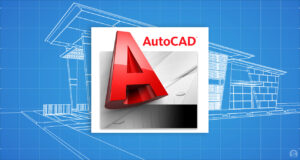AutoCAD vs Revit: 5 Key Differences + 5 Useful Features of the Two (2023)

The world of CAD software is vast and confusing, so it’s essential to know the strengths and weaknesses of each program so you can make the right decision when choosing one. This article will help you understand AutoCAD vs. Revit, their fundamental differences, and how they can complement each other in your next project and while choosing the right certification courses for architects in India!
AutoCAD vs. Revit: 5 Key Differences
AutoCAD and Revit are Two Different Things
AutoCAD is a tool that allows you to create and edit drawings and 3D models. Revit is a process for managing building design, construction, and maintenance. Individuals can use it to execute infrastructure projects like bridges or tunnels.
Revit is Project-Centric, and AutoCAD is Drawing-Centric
Revit is project-centric, whereas AutoCAD is drawing-centric. While Revit is meant to be used on complete projects, AutoCAD is better suited for smaller project sections. It also means that Revit was designed with collaboration in mind. While AutoCAD was made to be used individually (though there are ways around this).
Revit is Meant for Full Projects, and AutoCAD is Better for Parts of a Project
Revit is best for complete projects, while AutoCAD is better for sections of projects. Revit is meant to be used as the whole package; you can design and document the entire project in one software. In this way, it can save time and money on multiple programs. On the other hand, AutoCAD is only meant to do parts of those projects. It’s made specifically for project parts – like individual components or sections.
Revit is Focused on Collaboration and AutoCAD for Individual Work
Revit is a team-based application, while AutoCAD is best used for individual work. Revit allows multiple users to work on the same project simultaneously, while AutoCAD is better suited to working alone.
AutoCAD has also been around for longer, and it’s a tool you can use for small and medium-sized projects that require precision, such as architecture or engineering. Revit is excellent for large projects like building a skyscraper or mega-mall because of its ability to manage large amounts of data, including multiple 3D models from various sources.
AutoCAD is a 2D Drafting Powerhouse
AutoCAD is a 2D drafting powerhouse. It’s more powerful and flexible, with a better user interface for a BIM professional course, which makes it easier to use.
If you’re planning on using both CAD software packages, you should start with AutoCAD because of its simplicity and ease of use. AutoCAD can do everything, but Revit is better for BIM projects. Revit has many more features and options than AutoCAD, so it’s not as intuitive or easy to learn.
What are the 5 Useful Features of AutoCAD?
AutoCAD is one of the most widely used CAD programs and has been around for decades. It’s incredibly powerful but has a steep learning curve for beginners.
- It allows you to create custom drawings from scratch without limitations on size or shape.
- You can easily modify existing drawings with tools like text boxes and lines to add information without starting over from scratch whenever you want something changed!
- You can share your files with other users without worrying about compatibility issues because AutoCAD works on all major platforms, including Windows 7/8/10 operating systems and Mac OS X 10.6+.
- AutoCAD supports both 2D and 3D modeling techniques, so there’s no need to learn how two different programs work together when working on your projects! All you need is one program that does everything seamlessly without jumping between other apps all day long!
- There’s no limit on what kind of projects you can create with AutoCAD, whether you’re just looking for something fun.
What are the 5 Useful Features of Revit?
Revit has many valuable features, including adding new information to a model. It will allow you to easily create schedules, sheets, clash detection, and more without much work. You can take measurements from an existing part of your model and add them as a new part.
- Navigating through the model is intuitive, and you can easily find any part of your design.
- The interface is clean and simple, so you can focus on what matters most: your design.
- Revit has powerful tools that allow you to create beautiful designs quickly and easily.
- Revit allows you to work with other people in real time, so there’s no need to wait for files to be sent back and forth—you can collaborate seamlessly.
- Because Revit is a cloud-based platform, it’s easy to access from anywhere in the world!
The Final Verdict – AutoCAD Vs. Revit
As you can see, AutoCAD and Revit are two tools with their strengths and weaknesses. If you were to use one tool instead of the other on a project, you would be missing out on some key features. Both software is excellent in their own right, but they can produce even better results when used together. For example:
- AutoCAD has more options for 2D drawings than Revit does
- Revit has better 3D modeling capabilities than AutoCAD does
If you use both programs together on your projects, this is what will happen. You’ll have all of the advantages of both programs available at once.
So which is the better option? It depends on your needs. If you’re looking for a collaboration tool that can handle large projects with multiple users and teams, then Revit is the way to go. But if you need more flexibility and control over individual tasks within those projects, AutoCAD may be more suitable.
Both programs have their strengths, so it’s essential to consider which program will provide the best fit for what you want out of your CAD software before making any final decisions about purchasing either one!






